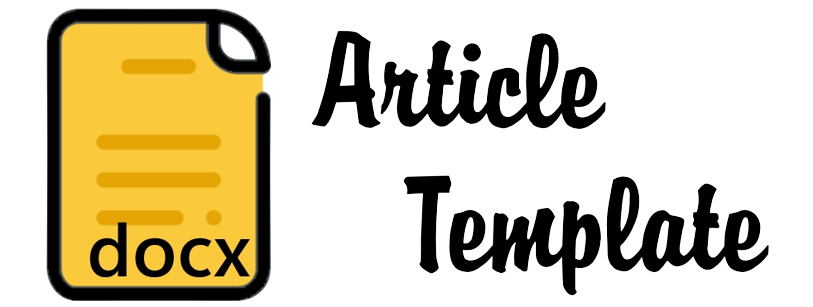The Feasibility of Gurindam Writing Teaching Materials Based on Narrative Text for Grade X Using Construct Validity
DOI:
https://doi.org/10.55909/jpbs.v4i5.870Keywords:
feasibility, gurindam writing, teaching materials, narrative text, construct validityAbstract
In 2024, an integrated teaching material for writing Gurindam based on a narrative text for grade X of high school was produced, containing 70 A4 pages. This manual teaching material contains three integrated learning units using a constructivist approach, namely integrated learning with expository text, prophetic short story text, and procedural text. This study aims to describe: 1) the feasibility of the content of the integrated teaching material for writing gurindam based on narrative text from a construct validity perspective; 2) the feasibility of the presentation of the integrated teaching material for writing gurindam based on narrative text using a construct validity perspective; 3) the feasibility of the language of the integrated teaching material for writing gurindam based on narrative text from a construct validity perspective. This research, which uses a quantitative descriptive method, took place in the even semester of the 2024/2025 academic year. Integrated teaching material data were collected using observation guidelines and checklists with a time triangulation system. The feasibility of the teaching material was determined by each of a material validator, method validator, and practitioner validator to assess each indicator using a value scale of 1-4. The results of the study: 1) the feasibility of the content of integrated teaching materials for writing gurindam based on narrative text from the perspective of construct validity is categorized as very feasible; 2) the feasibility of the presentation of integrated teaching materials for writing gurindam based on narrative text from the perspective of construct validity is categorized as very feasible; 3) the feasibility of the language of integrated teaching materials for writing gurindam based on narrative text from the perspective of construct validity is categorized as very feasible.
References
Abdullah S, A. S., Susilo, S., & Mulawarman, W. G. (2022). Analisis Kelayakan Buku Teks Bahasa Indonesia untuk Siswa Kelas VIII Sekolah Menengah Pertama. Diglosia: Jurnal Kajian Bahasa, Sastra, dan Pengajarannya, 5(3), 707-714. https://doi.org/10.30872/diglosia.v5i3.433
Azwar, S. (2016). Sikap Manusia: Teori dan Pengukurannya. Yogyakarta: Pustaka Pelajar.
Budiaji, W. (2013). Skala Pengukuran dan Jumlah Responden Skala Likert. Jurnal Ilmu Pertanian dan Ilmu Perikanan. Volume 2, No. 2, 2013, 127-133. DOI:10.31227/osf.io/k7bgy
Çavdar, G., & Doe, S. (2012). Learning through Writing: Teaching Critical Thinking Skills in Writing Assignments. PS: Political Science and Politics, 45(2), 298-306. https://doi.org/10.1017/S1049096511002137
Cresswell, J. W. (2008). Educational Research: Planning, Conducting, and Evaluating Quantitative and Qualitative Research. New Jersey: Pearson Practice Hall
Crossley, S. A., Allen, D. B., & McNamara, D. S. (2011). Text Readability and Intuitive Simplification: A Comparison of Readability Formulas. Reading in a Foreign Language, 23(1), 84-101.
Durga, V. S. S., & Rao, C. S. (2018). Developing Students’ Writing Skills in English-A Process Approach. Journal for Research Scholars and Professionals of English Language Teaching, 6(2), 1–5.
Elmustian, E., Hermandra, H., Mustafa, M. N., Adriansyah (2024). Pengembangan Bahan Ajar Menulis Gurindam Berbasis Teks Naratif untuk Kelas X SMA/MA/SMK. Laporan Penelitian. Pekanbaru: Fakultas Keguruan dan Ilmu Pendidikan, Universitas Riau.
Fitria, T. N. (2021). Grammarly as AI-Powered English Writing Assistant: Students’ Alternative for Writing English. Metathesis: Journal of English Language, Literature, and Teaching, 5(1), 65–78.
Gupta, R. (2014). Expectations vs. Reality: The Readability of Texts in the Primary Grades in India. Procedia - Social and Behavioral Sciences, 116, 3916–3920. https://doi.org/10.1016/j.sbspro.2014.01.866
Gyasi, W. K., & Slippe, D. P. (2019). Readability of English language textbooks for diploma students of the University of Cape Coast. International Journal of Research, 8(1), 107–115.
Hapsari, T. P. R. N., & Wulandari, A. (2020). Analisis Kelayakan Buku Ajar Milenial Berbasis Augmented Reality (AR) sebagai Media Pembelajaran Teks Prosedur di Magelang. Diglosia: Jurnal Kajian Bahasa, Sastra, dan Pengajarannya, 3(4), 351-364. https://doi.org/10.30872/diglosia.v3i4.125
Hatch, E. & Farhady, H. (1982). Reseacrh Design and Statistics. Rowley, Massachusetts, USA: Newbury House Publishers.
Hidayat, M.T. (2018). Pengembangan Bahan Ajar Menulis Pantun Menggunakan Media Mencari Pasangan Kartu pada Siswa Kelas VII SMP Negeri 12 Langsa. Jurnal Samudra Bahasa, Volume 1, No. 2, Tahun 2018, 64-73.
Khulsum, U., Hudiyono, Y., & Sulistyowati, E. D. (2018). Pengembangan Bahan Ajar Menulis Cerpen dengan Media Storyboard pada Siswa Kelas X SMA. Diglosia: Jurnal Kajian Bahasa, Sastra, dan Pengajarannya, 1(1), 1-12. http://diglosiaunmul.com/index.php/diglosia/article/view/4
Marta, L. N. P. M., Mursalim, & Suhatmady, B. (2020). Pengembangan Bahan Ajar Menulis Berita pada Siswa SMP Kelas VIII. Diglosia: Jurnal Kajian Bahasa, Sastra, dan Pengajarannya, 3(3), 243-252. https://doi.org/10.30872/diglosia.v3i3.60
Elmustian, Sari, S. P., & Mustika, T. P. 2024). Pengembangan Bahan Ajar Menulis Pantun Menggunakan Pendekatan Konstruktivisme. Jurnal Pembelajaran Bahasa dan Sastra, 3(4), 437–450. https://doi.org/10.55909/jpbs.v3i4.609
Mawaddah, R., Triwoelandari, R., & Irfani, F. (2022). Kelayakan LKS Pembelajaran IPA Bberbasis Stem untuk Meningkatkan Keterampilan Kolaborasi Siswa SD/MI. Jurnal Cakrawala Pendas, 8(1), 1–14. https://doi.org/10.31949/jcp.v8i1.1911
Muslich, M. (2010). Text Book Writing: Dasar-Dasar Pemahaman, Penulisan, dan Pemakaian Buku Teks. Jakarta: Ar-Ruzz Media.
Ranem, R. (2018). Pengembangan Bahan Ajar Materi Debat dengan Metode Role Playing pada Siswa Kelas X Sekolah Menengah Atas. Diglosia: Jurnal Kajian Bahasa, Sastra, Dan Pengajarannya, 1(2), 65-74. Diperoleh dari http://diglosiaunmul.com/index.php/diglosia/article/view/10
Razak, A. (2018). Membaca Pemahaman: Teori dan Aplikasi Pengajaran, Edisi VII Cetakan VIII. Pekanbaru: Ababil Press.
Sutriyati, S., Mulawarman, W. G., & Hudiyono, Y. (2019). Pengembangan Bahan Ajar Menulis Esai dengan Memanfaatkan Kearifan Lokal melalui Pembelajaran Berbasis Proyek (PBP) Siswa SMA. Diglosia: Jurnal Kajian Bahasa, Sastra, dan Pengajarannya, 2(1), 39-46. https://doi.org/10.30872/diglosia.v2i1.16
Wisudawati, A. W. & Sulistyowati, E. (2014). Metodologi Pembelajaran IPA. Jakarta: Bumi Aksara.
Zahro, A., & Aprilia, D. (2024). Pengembangan Modul Ajar Menulis Naskah Drama Satu Babak Kurikulum Merdeka untuk Peserta Didik Kelas XI SMK. Diglosia: Jurnal Kajian Bahasa, Sastra, dan Pengajarannya, 7(4), 705-714. https://doi.org/10.30872/diglosia.v7i4.1017
Downloads
Published
How to Cite
Issue
Section
License
Copyright (c) 2025 Welsi Damayanti, Rika Widawati, Siti Hamidah

This work is licensed under a Creative Commons Attribution-NonCommercial-ShareAlike 4.0 International License.







